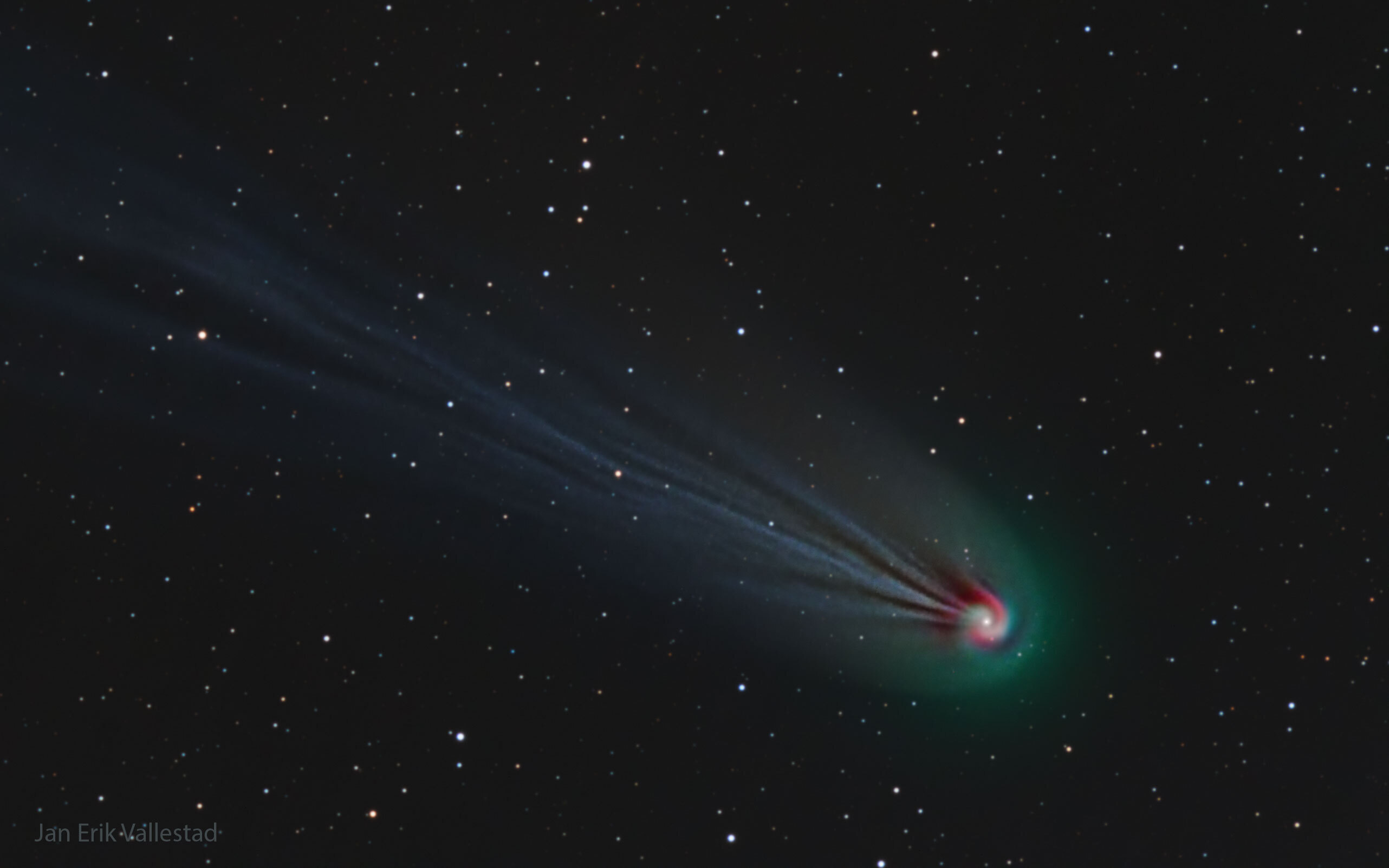#comet

C/2023 A3 (Tsuchinshan-ATLAS) ⭐⭐⭐
Perihelion: September 27, 2024 (mag 0.2)
Closest approach to Earth: October 12, 2024 (mag -0.9)
Where to observe: Southern Hemisphere (before perihelion), Northern Hemisphere (after perihelion)
Visibility forecast: #Comet Tsuchinshan-ATLAS has the potential to become exceptionally bright and earn the title of a “great comet”. In September and October, it might become visible to the naked eye and rival the luminosity of the brightest stars in the sky! Read our article to get a detailed guide on observing Comet Tsuchinshan-ATLAS.
Description: C/2023 A3 (Tsuchinshan–ATLAS) is a comet from the Oort cloud discovered by the Purple Mountain Observatory on January 9, 2023, and independently found by the ATLAS astronomical survey on February 22, 2023.
https://starwalk.space/en/news/upcoming-comets

#Comet Olbers over Kunetice Castle
#Astronomy #Picture of the Day
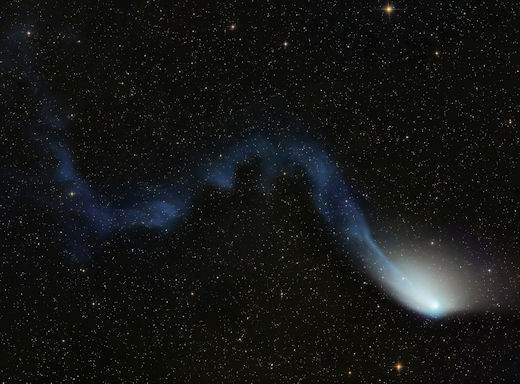
A gust of solar wind hit it. Don Bartlett of June Lake, California, photographed 13P/Olbers on the 4th of July and found its tail twisted into a corkscrew shape. "The #sun is having #fun with this #comet," he says.
"I've imaged 13P every night since June 22nd, without a hiccup, and this comet changes nightly," says Bartlett.
The reason: Solar activity. Comet Olbers is making its closest approach to the sun in 69 years. Falling inward from the outer solar system, it has arrived just in time for Solar Max. CMEs and other gusts of solar wind are buffeting the comet daily, causing its tail to shape-shift in interesting ways.
48 hours later in Slovakia, astronomer Petr Horálek saw the same curlicues rippling downstream:
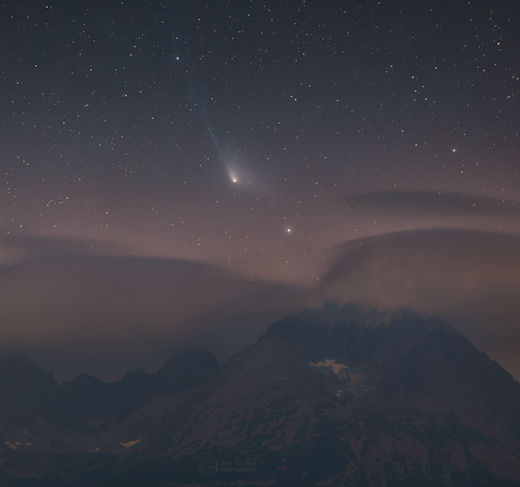
"On July 6th, I was lucky to capture its beautiful tail while the comet was moving over cloudy Gerlachovsky Peak, the highest peak of Slovakia located in the High Tatras mountains," says Horálek.
"If you want to see this comet and you are located in the Northern Hemisphere, try your luck in the upcoming days before the Moon becomes too bright again," he advises. "After sunset, the comet may be found low over the northwest horizon beneath the constellation #UrsaMajor. "
The comet is magnitude +6.8, too dim for the naked eye, but an easy target for backyard telescopes.
This week #JohnChewter tells the #suppressed #history of the 562AD ‘comet’ that caused havoc down the length of the #UK, killed many thousands of people, was the major cause of the UK’s Dark Ages and was deliberately covered up by the Pope. However, the story does not end there. It spans seven countries and three continents, possibly explaining a few ‘mysteries’ along the way. This show will likely raise a few eyebrows!
John had a background in electronic design and went on to be International Sales and/or Marketing VP for such well-known companies such as Harris, Zilog, Logitech, and Mustek.
For the last 20 years, John has been running Coastal Computing (a web & app technology company) with offices in Spain and the UK. He now specializes in coding & designing large website systems and new scheduled radio stations for broadcast companies, retail chain stores and other interested parties.
Alongside Coastal Computing, John and his archaeologist / anthropologist wife Sally have set up, coded, and run DeprogrammedRadio.com. This is a 24/7 web radio station, on their own servers, which automatically imports, time shifts and streams ‘alternative’ programs created by 3rd parties who would otherwise not get an airing on mainstream media - as well as some solid & relevant science shows. We can, and sometimes do, control it from smart-phones when we are travelling or researching.
John used participate in Roman excavations in southern #England, has always been interested in classical and #ancient history, especially the bits that ‘do not fit’. He has been researching some of these oddities for some 40 years, sometimes collaborating and assisting other alternative researchers, broadcasters and filmmakers, some of whom have appeared on this #show.
https://www.youtube.com/watch?v=aWVeCP0bluc

#Comet #Pons-Brooks Develops Opposing #Tails
#Astronomy #Picture of the Day
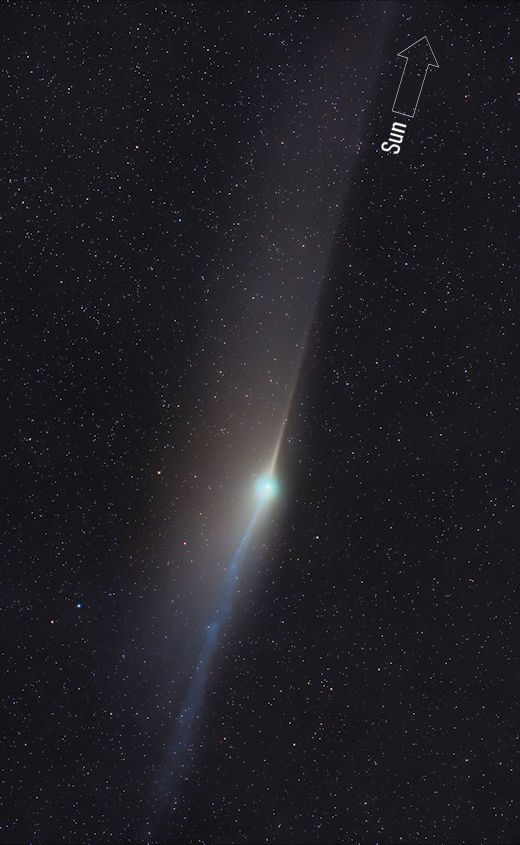
ANTI-TAIL OF #COMET 12P: Comet tails are supposed to point away from the sun. Comet 12P/Pons-Brooks just sprung a tail in the opposite direction--an anti-tail. It's the narrow spike pointing toward the sun in this picture taken June 1st by amateur astronomers Michael Jäger, Gerald Rhemann and Lukas Demetz:
Anti-tails are an optical illusion. They appear when Earth passes through a comet's orbital plane, which, for Comet 12P, is happening this week. During the crossing, the sharp edge of the comet's fan-shaped dust tail appears to point toward the sun.
"Earth crosses the comet's orbital plane on June 6th, so we will see this 'neck-line' structure for several more days," says Jäger.
Comet 12P (magn. +7) is not visible to the naked eye, but it is an easy target for amateur telescopes. Southern hemisphere astronomers can find the comet in the constellation Lepus about 20 degrees below the celestial equator. The antitail will narrow in the days ahead, reaching maximum sharpness on June 6th.
#X-ray #SolarFlares
6-hr max: M2 0631 UT Jun04
https://youtube.com/watch?v=3ZkPA_2t8wY
◘ May 3: Celestial Parade
◘ May 4: Close Conjunction of #Moon and #Saturn
◘ May 5: Close Conjunction of Moon and #Mars
◘ May 5-6: η-Aquariid meteor shower
◘ May 6: Moon at perigee
◘ May 8: New Moon
◘ May 8-9: η-Lyrids meteor shower
◘ May 13: #Uranus at solar conjunction
◘ May 14: #Mercury at its highest altitude in the dawn sky
◘ May 17: Moon at apogee
◘ May 18: #Jupiter at solar conjunction
◘ May 20: The Devil #Comet meets #Rigel
◘ May 23: Flower Moon
◘ May 24: Lunar Occultation of #Antares
◘ May 31: Lunar Occultation of #Saturn
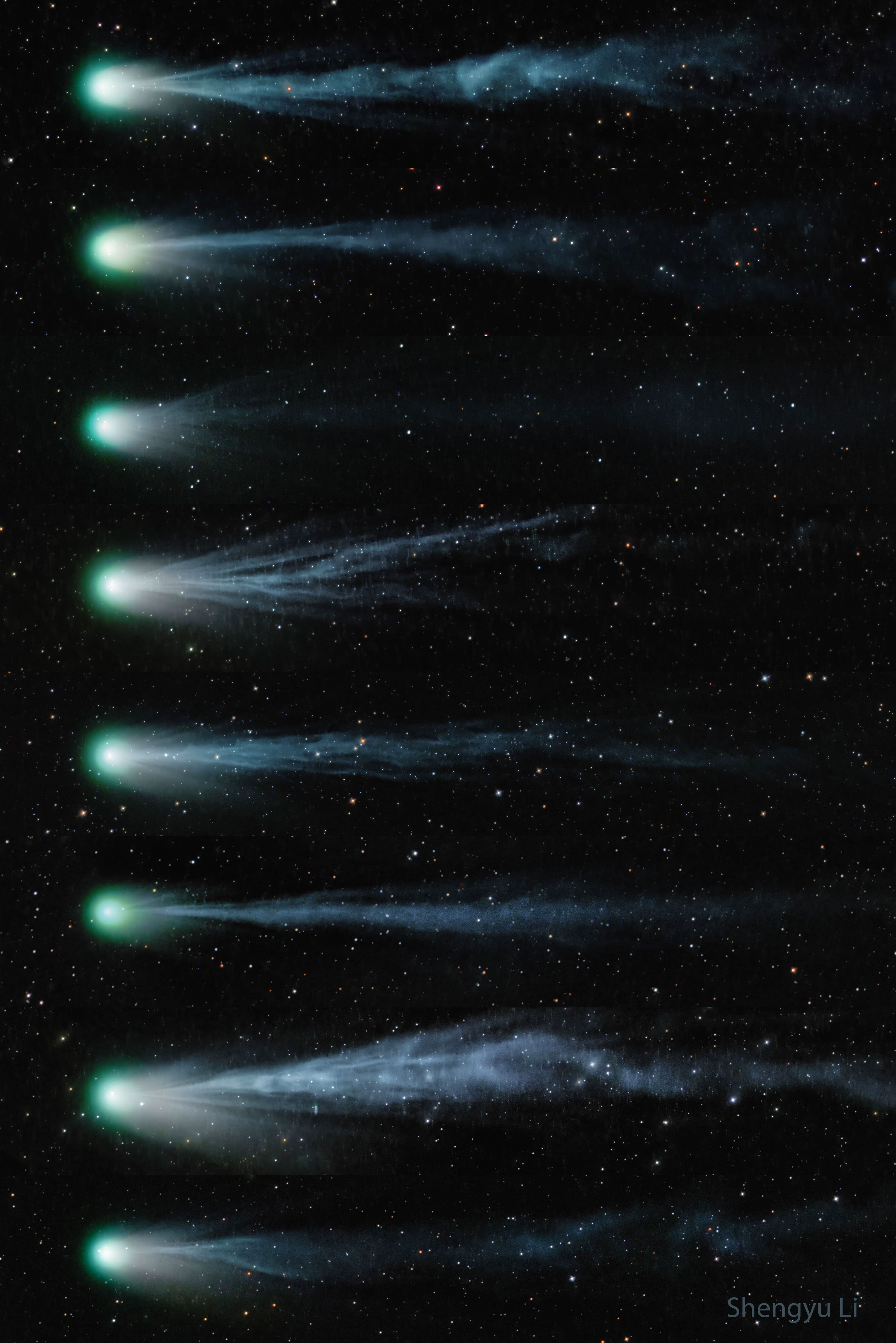
The Changing #IonTail of #Comet #Pons-Brooks
#Astronomy #Picture of the Day
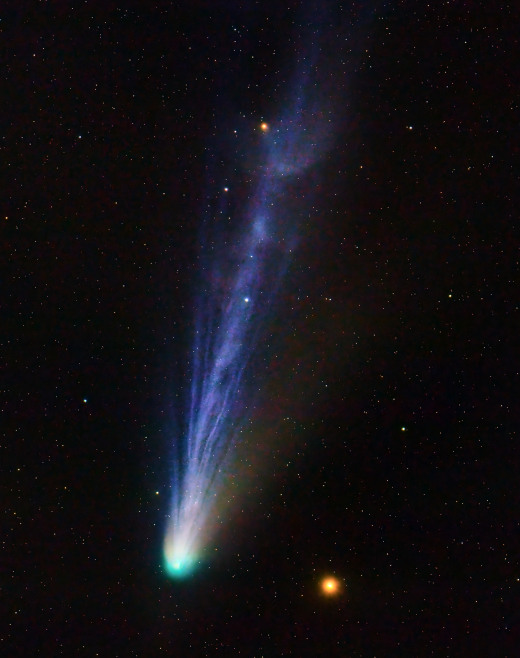
If you do photograph 12P, try taking a series of short exposures, then discard the ones (if any) criss-crossed by satellites. Combining the "clean" shots can produce an image like this:
"This is a 32 min exposure in 15 sec single shots," says Fritz Helmut Hemmerich, who observed the comet from #Tenerife in the Canary Islands on March 31st. "The #comet looked great as it passed near the yellow-orange star Hamal (mutton in Arabic) in the constellation Aries. I'm very happy to get this shot with such modest equipment."
Satelites aside, Comet 12P is a great target for amateur astrophotographers. It will be in the evening sky all week long, and might even be visible during the April 8th solar eclipse.
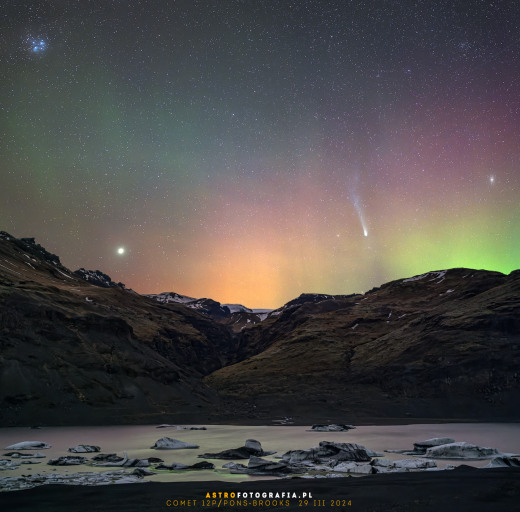
#AURORAS AND THE 'DEVIL COMET': If you want to photograph a beautiful #comet, this is the week to do it. For the next 7+ days, "devil comet" 12P/Pons-Brooks will pop out of the twilight after sunset, its magnificent tail pointing up into the night sky. Michal Kaluzny sends this picture from the Solheimajokull glacier lagoon in #Iceland:
"Fortunately, the auroras weren't too strong, allowing for the delicate tail of the comet to be exposed," says Kaluzny. Also in Iceland, Wioleta Gorecka photographed the comet emerging from a bright green curtain of Northern Lights.
You don't need to be in Iceland to photograph this comet. It's visible around the world, shining like a 5th magnitude star in the constellation Aries. Technically, it's bright enough to see with the naked eye, but in practice you'll need binoculars or a small telescope to pull it out of the western twilight. Cameras with night sky settings should have no trouble recording the comet's tail in wide-angle landscape shot

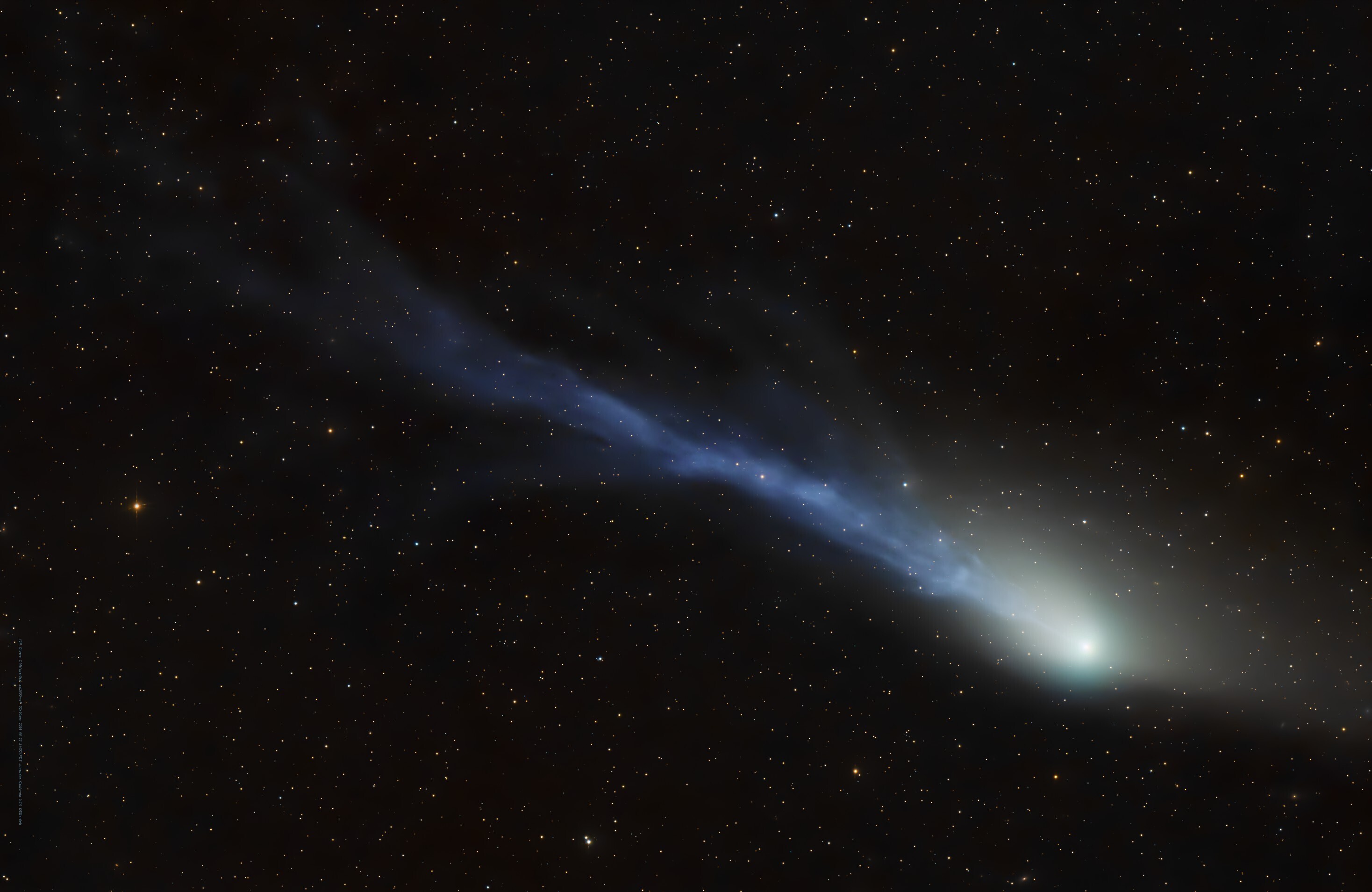
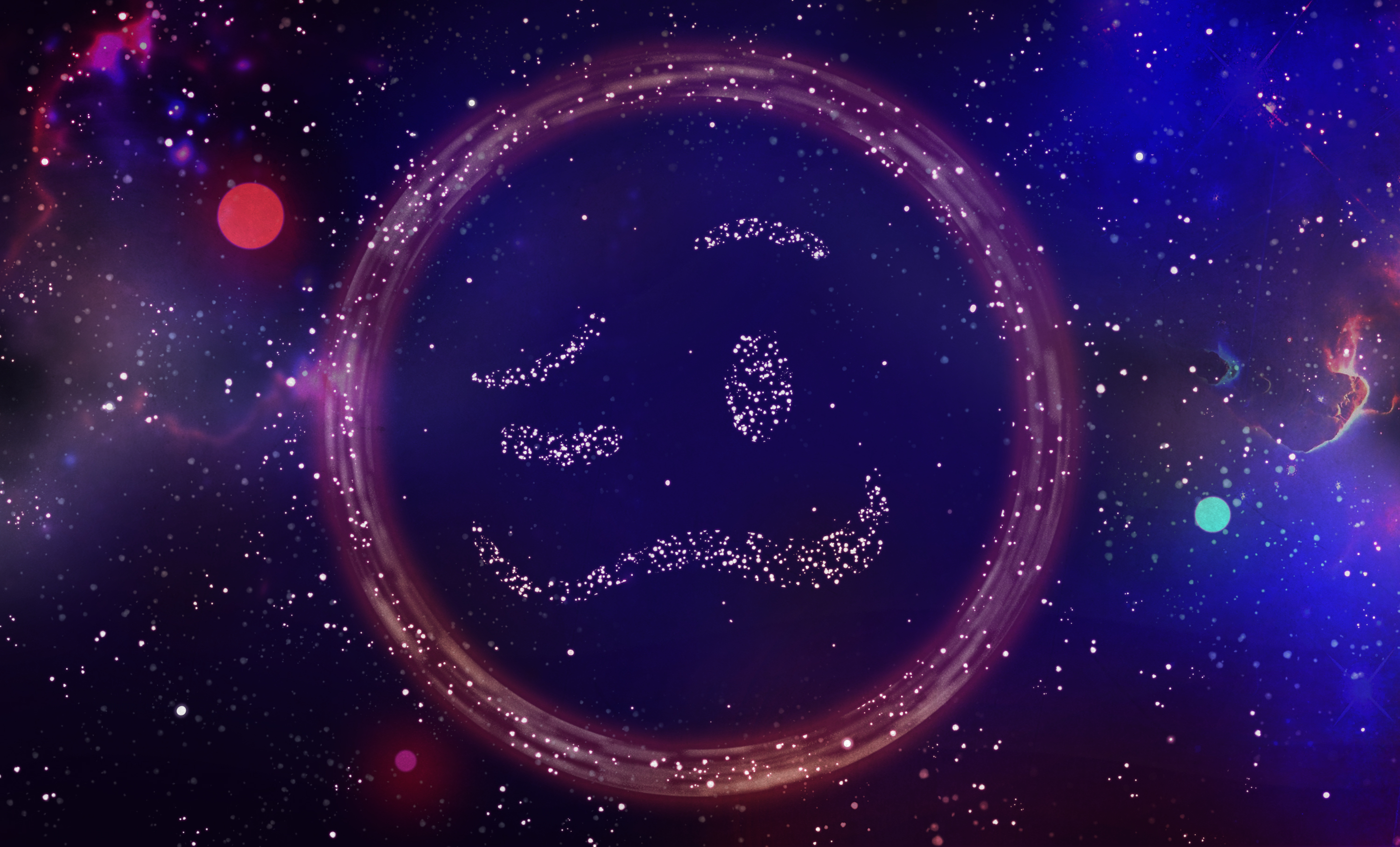
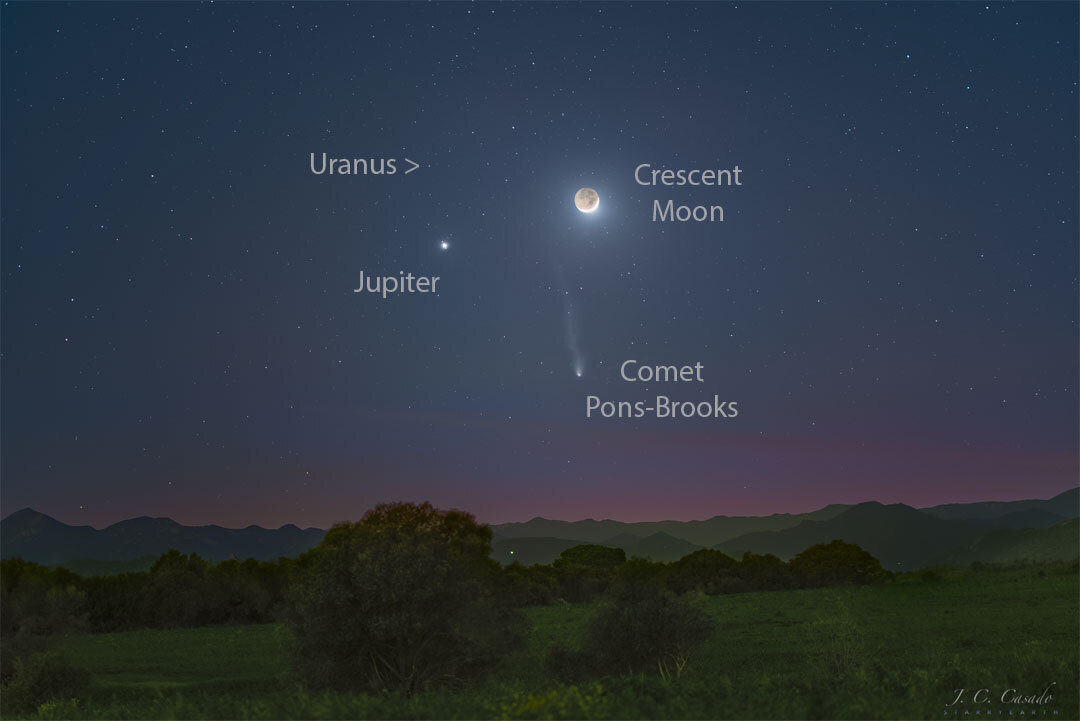
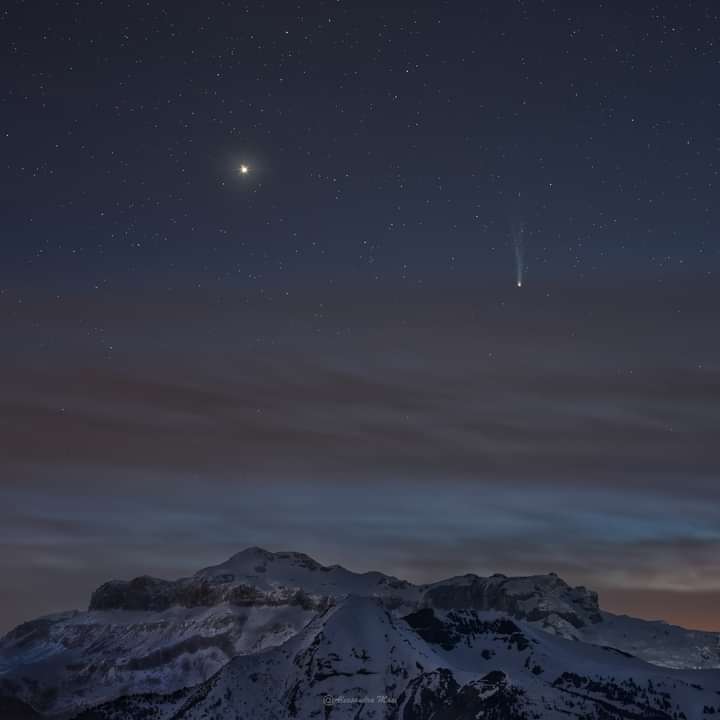
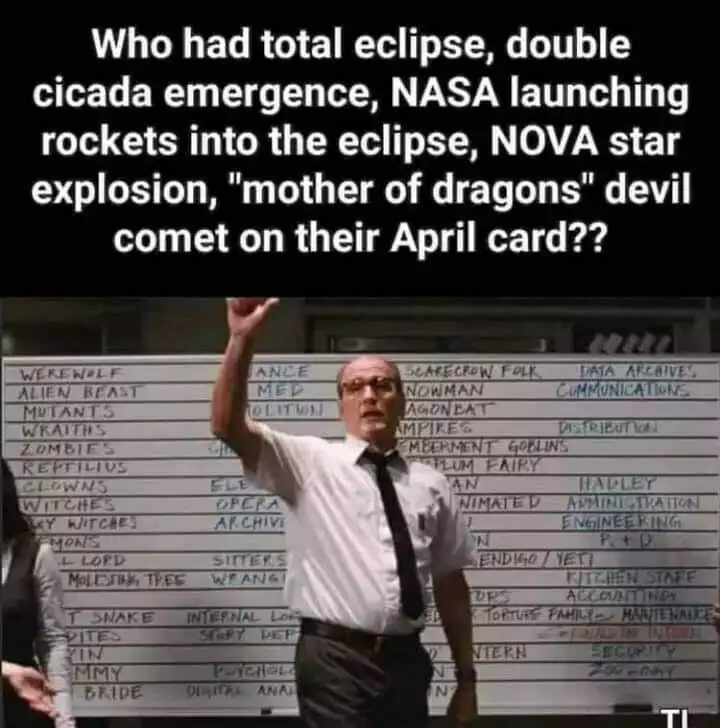
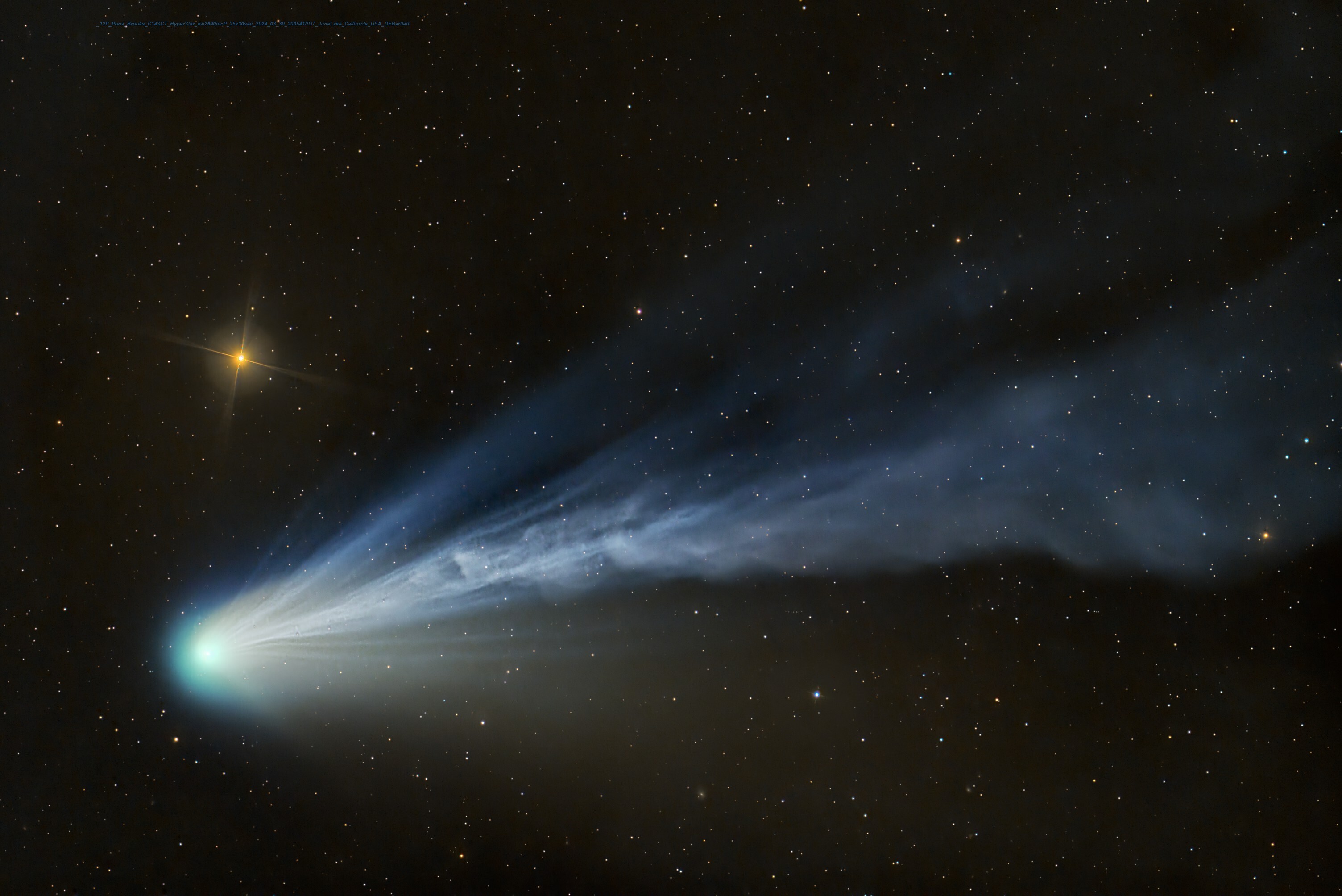
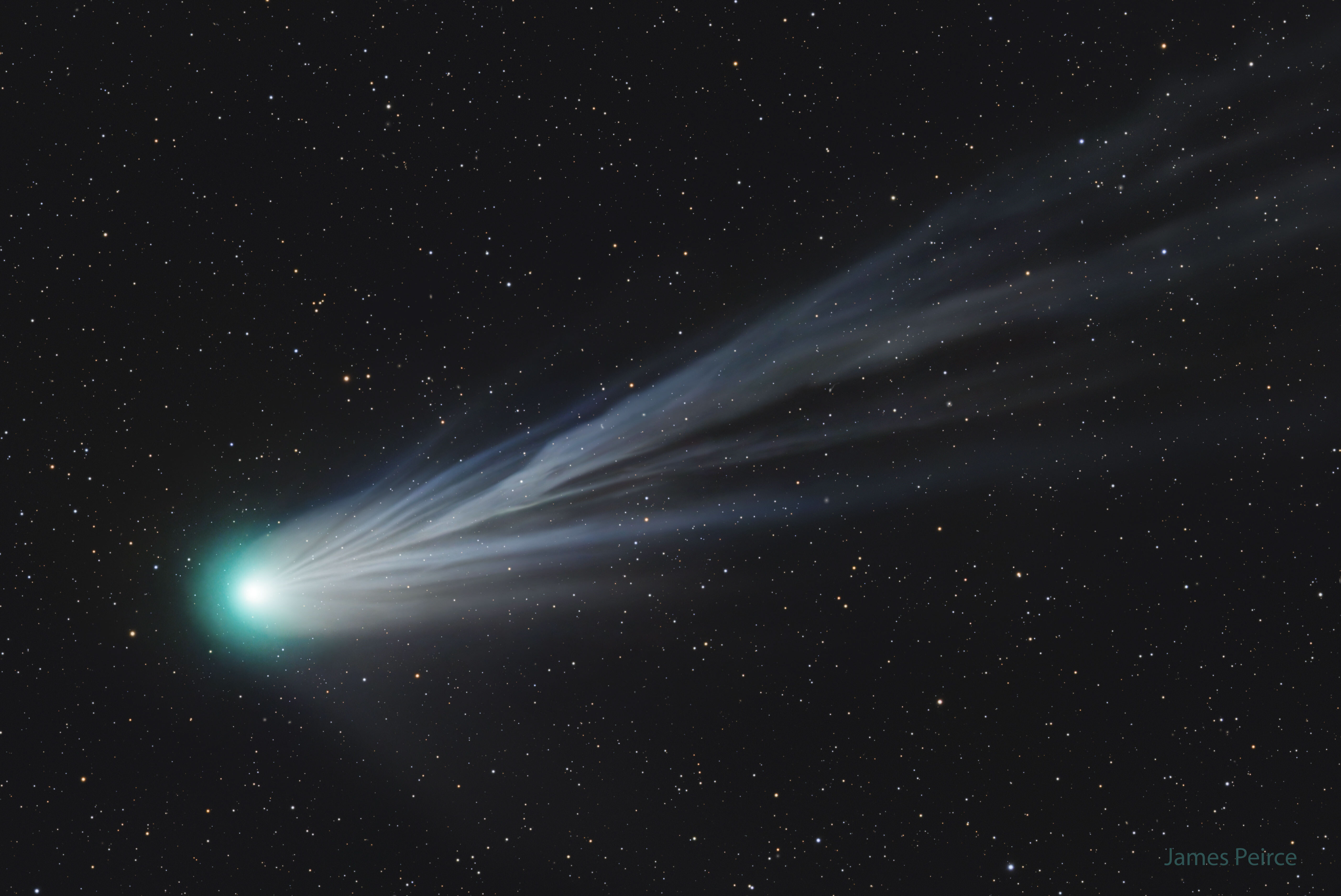
/cloudfront-eu-central-1.images.arcpublishing.com/madsack/GGRY73UW4HOAK5LAP3OTMSVGPE.jpg)
